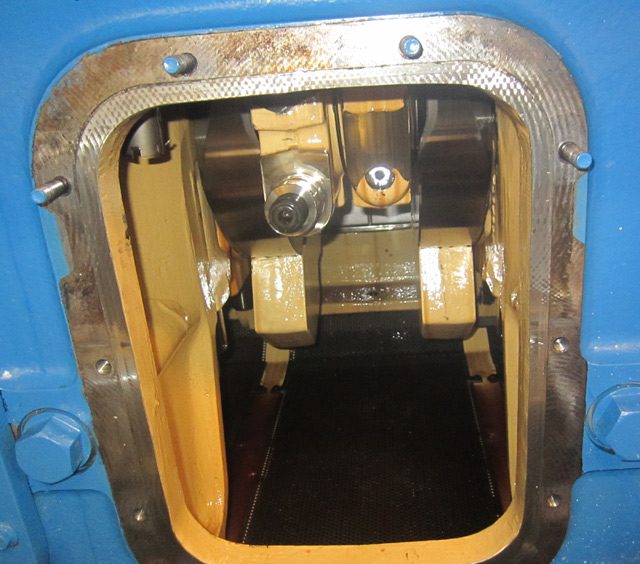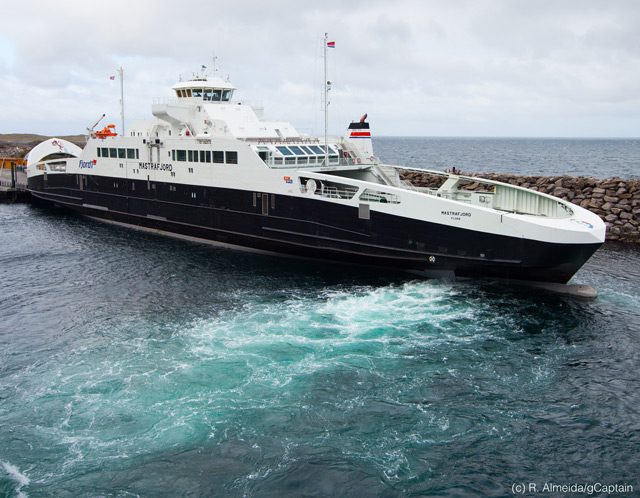See full post, all photos and the news on our blog - just click this link
>Clean Skies Above and Clean Engine Rooms Below on LNG-Powered Ships
>Clean Skies Above and Clean Engine Rooms Below on LNG-Powered Ships
In 2001, Norway’s largest ferry operator, Fjord1 commissioned the world’s first LNG-powered ferry, the MV Glutra, and 13 years later the company now has a total of 12 LNG-fueled vessels.
The decision to switch to gas as a fuel had been supported by the Norwegian Parliament five years earlier on the basis that large quantities of gas had been discovered on the Norwegian Continental Shelf (NCS) and the Norwegian government wanted to build the country’s expertise when it came to the use of natural gas as a fuel.
Most importantly however, the decision was one that also resulted in huge reductions in pollution as it eliminated 90 percent of all NOx emissions, reduced CO2 emissions by 25 percent, and completely eliminated particulate matter – except from any lube oil that might be combusted in the engine.
Considering that in 2011, these vessels spent 234,000 hours in operation, the results were quite tangible.
Not only are the skies above these ferries now cleaner, but the ferries themselves are cleaner, particularly in the engine room. Fjord1 released the following images of an engine crank case which had been opened up after 42,900 hours of running time.
Notice how clear the lube oil still is.
The MV Bergensfjord, pictured at the top of the page, is one of five sister vessels built for Fjord1 and features Promas integrated rudder and propeller systems and four Rolls-Royce BV35:40V12PG gas engines and designed to operate at a speed of 21 knots at 11,800 kW. Two of the five vessels have smaller, 5,000kW propulsion plants and are designed to operate at 17 knots.
Each ferry also carries a pair of 125 m3 lng fuel tanks.
While the lube oil is cleaner, Fjord1 notes in a presentation that the maintenance costs are on par with those seen on conventional diesels, however it seems very likely these engines could last significantly longer.
Norway’s pioneering work within LNG has paved the way for other operators around the world to make the switch. In Puget Sound, the Washington State Ferries will likely convert six of their Issaquah-class ferries in the coming years and both the British Columbia Ferries and Staten Island Ferries are looking to convert their vessels from diesel to LNG fuel in the near future. In addition, the Société des traversiers du Québec, which provides intra-provincial ferry services in
Quebec, has ordered three new LNG-fueled ferries to be built at Chantier Davie Canada (two) and Finacantieri (one).
The post Clean Skies Above and Clean Engine Rooms Below on LNG-Powered Ships appeared first on gCaptain Maritime & Offshore News.
The decision to switch to gas as a fuel had been supported by the Norwegian Parliament five years earlier on the basis that large quantities of gas had been discovered on the Norwegian Continental Shelf (NCS) and the Norwegian government wanted to build the country’s expertise when it came to the use of natural gas as a fuel.
Most importantly however, the decision was one that also resulted in huge reductions in pollution as it eliminated 90 percent of all NOx emissions, reduced CO2 emissions by 25 percent, and completely eliminated particulate matter – except from any lube oil that might be combusted in the engine.
Considering that in 2011, these vessels spent 234,000 hours in operation, the results were quite tangible.
Not only are the skies above these ferries now cleaner, but the ferries themselves are cleaner, particularly in the engine room. Fjord1 released the following images of an engine crank case which had been opened up after 42,900 hours of running time.
Notice how clear the lube oil still is.
The MV Bergensfjord, pictured at the top of the page, is one of five sister vessels built for Fjord1 and features Promas integrated rudder and propeller systems and four Rolls-Royce BV35:40V12PG gas engines and designed to operate at a speed of 21 knots at 11,800 kW. Two of the five vessels have smaller, 5,000kW propulsion plants and are designed to operate at 17 knots.
Each ferry also carries a pair of 125 m3 lng fuel tanks.
While the lube oil is cleaner, Fjord1 notes in a presentation that the maintenance costs are on par with those seen on conventional diesels, however it seems very likely these engines could last significantly longer.
Norway’s pioneering work within LNG has paved the way for other operators around the world to make the switch. In Puget Sound, the Washington State Ferries will likely convert six of their Issaquah-class ferries in the coming years and both the British Columbia Ferries and Staten Island Ferries are looking to convert their vessels from diesel to LNG fuel in the near future. In addition, the Société des traversiers du Québec, which provides intra-provincial ferry services in
Quebec, has ordered three new LNG-fueled ferries to be built at Chantier Davie Canada (two) and Finacantieri (one).
The post Clean Skies Above and Clean Engine Rooms Below on LNG-Powered Ships appeared first on gCaptain Maritime & Offshore News.




